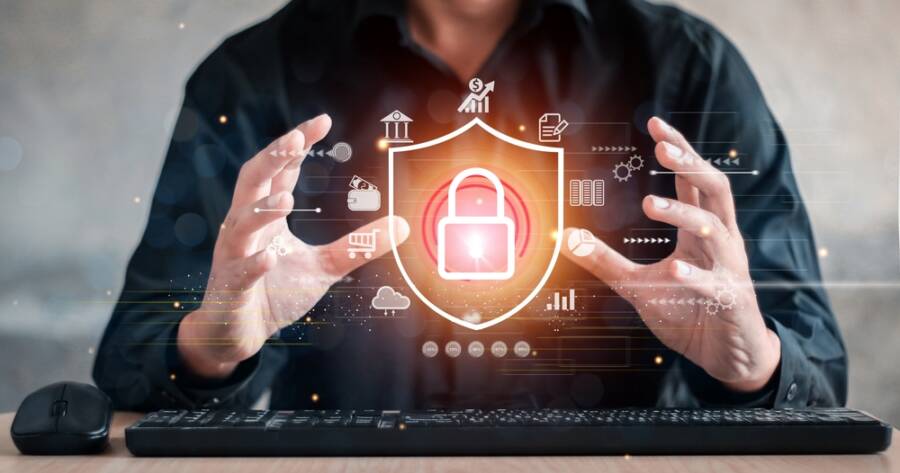In today’s digital age, where virtually every aspect of life connects through the internet, cybersecurity has become a critical concern for individuals and organizations alike. The expanding digital landscape, while offering unparalleled convenience and connectivity, also invites risks such as data breaches, identity theft, and cyberattacks. Understanding basic cybersecurity practices can help protect your digital life from these threats, ensuring your personal information remains secure.
Understanding the Importance of Cybersecurity
Before delving into specific practices, it’s vital to understand the significance of cybersecurity in today’s interconnected world.
Cyber Threats on the Rise
With the proliferation of digital devices and online services, cyber threats have grown in number and sophistication. From ransomware attacks that lock you out of your own data to phishing schemes that trick users into revealing sensitive information, the range of tactics employed by cybercriminals is extensive. Awareness of these threats is the first step in fostering a proactive approach to cybersecurity.
Personal and Financial Implications
A cybersecurity breach can have severe personal and financial repercussions. Unauthorized access to personal accounts may lead to identity theft, resulting in financial losses and damage to one’s credit score. Beyond financial harm, breaches can also impact personal privacy, revealing sensitive information to malicious actors. Recognizing these implications underscores the need for vigilance in safeguarding digital life.
Implementing Strong Passwords and Authentication
Passwords act as the first line of defense in securing digital accounts. Developing strong password habits is crucial for cybersecurity.
Crafting Complex Passwords
Strong passwords are characterized by length, complexity, and unpredictability. A robust password typically includes a combination of letters (both uppercase and lowercase), numbers, and special characters. Avoid using easily-guessed information like birthdays or common words. Employing unique passwords for each account minimizes risk, as a breach in one account doesn’t compromise others.
Utilizing Multi-Factor Authentication (MFA)
Multi-Factor Authentication (MFA) adds an extra layer of security by requiring more than just a password to access an account. This might include a secondary method of verification, such as a code sent to your mobile device or an authentication app. Enabling MFA wherever possible increases account security by making unauthorized access significantly more challenging.
Practicing Safe Browsing and Email Use
Secure browsing and email habits help prevent unauthorized access and protect against malicious software.
Avoiding Suspicious Links and Downloads
Clicking on unknown links or downloading unverified attachments can introduce malware into your system. Exercise caution when encountering unexpected emails or pop-ups. Verify the sender’s identity before interacting with any email content, and avoid downloading files from unfamiliar websites.
Secure Use of Public Wi-Fi
Public Wi-Fi networks, while convenient, are often less secure than private connections, potentially exposing data to interception. When accessing sensitive accounts or entering personal information, use a virtual private network (VPN) to encrypt your connection, reducing the risk of data theft.
Keeping Software and Systems Updated
Regular updates to software and systems are essential in maintaining cybersecurity defenses.
Patching Vulnerabilities
Cybercriminals often exploit vulnerabilities in outdated software. Keeping your operating system, applications, and antivirus software up to date helps patch known vulnerabilities, providing an additional layer of protection against attacks. Enable automatic updates whenever possible to ensure your systems are protected against the latest threats.
Regular System Backups
Regularly backing up your data helps mitigate the effects of potential data loss from cyberattacks like ransomware. Keeping backups on external devices or secure cloud services ensures you can recover important information and minimize disruptions in the event of a breach.
Educating Yourself and Others
Cybersecurity is not a one-time fix but an ongoing practice that benefits greatly from education and awareness.
Staying Informed on Cybersecurity Trends
Cyber threats and security methods evolve rapidly. Keeping informed about the latest cybersecurity trends and best practices helps you anticipate potential threats. Subscribe to trusted cybersecurity news platforms or follow reputable tech blogs for updates and tips.
Sharing Knowledge with Others
Promoting cybersecurity awareness extends beyond personal practice; it involves encouraging others to implement safe habits as well. Share valuable insights and practices with family, friends, and colleagues to create a more secure digital environment for everyone. Cultivating a culture of cybersecurity awareness enhances protection across networks and communities.
Learn More Today!
Protecting your digital life necessitates an understanding of cybersecurity’s critical role and the adoption of essential practices to safeguard personal and financial information. From implementing strong passwords and multi-factor authentication to practicing safe browsing habits and keeping software updated, these measures work collaboratively to fortify your defenses against increasingly sophisticated cyber threats.
Continued education and awareness help ensure that individual and collective efforts evolve alongside emerging risks, fostering a secure digital landscape. By embracing these essential practices, individuals can confidently navigate the digital realm, maximizing the benefits of connectivity while minimizing vulnerability to cyberattacks.

